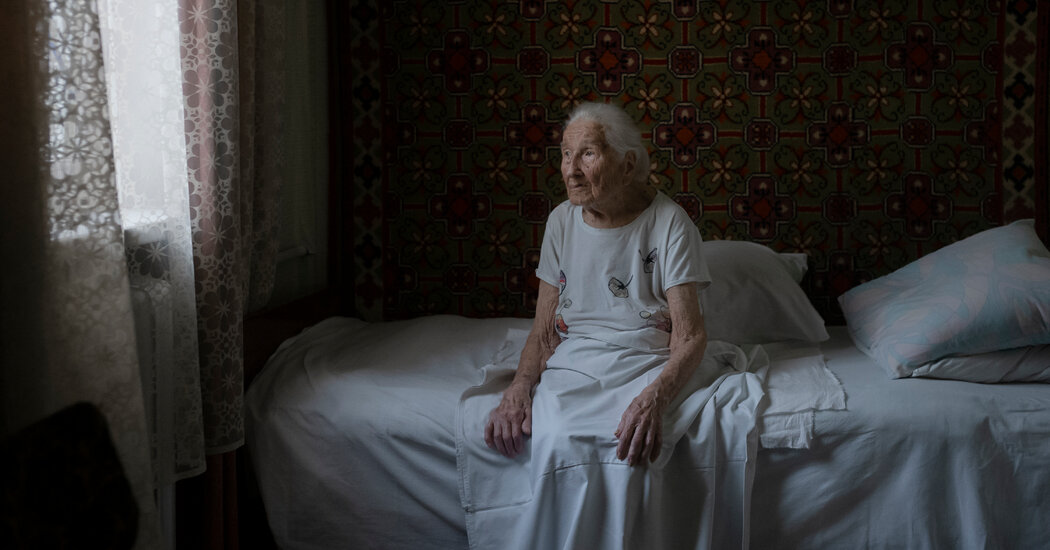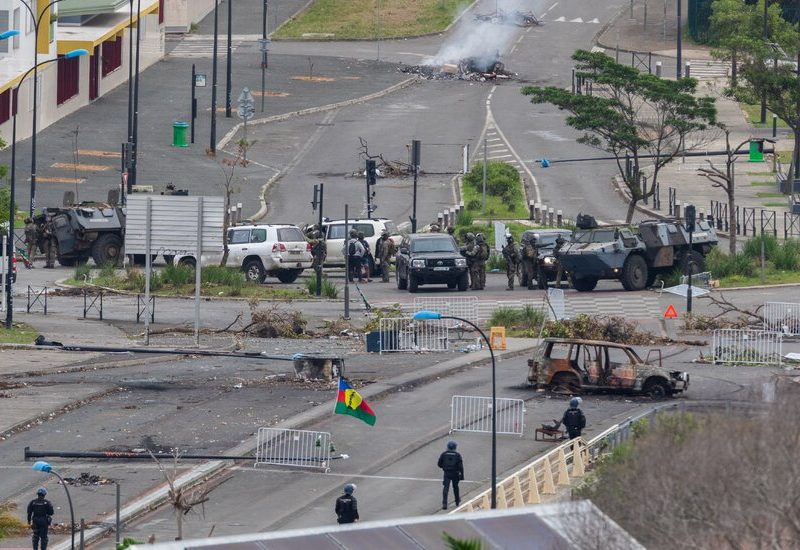When she first heard that Ukraine was under attack by an invading army, Halyna Semibratska, now 101 years old, was confused.
“It’s not the Germans who have attacked us?” Ms. Semibratska asked. No, her daughter, Iryna Malyk, 72, replied. This time it was their neighbor, Russia.
It came as a shock.
Ms. Semibratska is one of a small group of elderly Ukrainians who have lived through not one but multiple invasions.
As children and teenagers, they saw their land and people ravaged in World War II. German troops and tanks swept through in 1941, seizing Ukraine from the Soviet Union, already seen by many Ukrainians as an occupying force. The Soviets reconquered it in 1943 and 1944.
Since 2022, war has once again devastated some of the same towns and cities, and Russian forces are now making new inroads in the north and east. Like those in the 1940s, the invaders have set up new administrations in occupied lands, seized grain and other resources, sent in secret police, abducted community members and instilled torture and fear.
For some Ukrainians, it has all happened within one lifetime — childhoods revisited in old age.
At her home in the port city of Kherson, which was seized by the Russians in 2022 and liberated later that year, Zinaida Tarasenko, 83, recounted how her mother protected her from the Germans who occupied their village, Osokorivka. She was a baby, but the violence she saw still returns in her dreams.
The Germans used the family’s home as a medical clinic: “My mother was pregnant. Germans forced her to clean their shoes, wash their uniform. They drank, sang songs.”
When Russian forces took Kherson two years ago, it was Ms. Tarasenko’s turn to protect her daughter, Olena, now 46, who was abducted from their home by Russian soldiers.
She searched frantically for a week, crisscrossing the city, going to a different prison each day, asking for news of her daughter. Then Olena returned. “She was afraid. I didn’t ask her much. Just: ‘Did they beat you?’” But, she added, “She wouldn’t say much.”
After Kherson was liberated in late 2022, two other women, both World War II survivors, found themselves hospitalized in beds a few feet apart and quickly became friends.
One, Halyna Nutrashenko, 94, ended up in a Kherson hospital after a Russian rocket destroyed her home, leaving her “under the rubble, inside the house,” she said. “I had a house, but now I don’t.”
More than eight decades earlier, she witnessed the brutal Nazi occupation of her home village in the Odesa region. She remembers avoiding German soldiers; she had seen them beating children. They forced her father to labor as a metalworker.
Many others were taken away, including all of the local Jewish population. In total across Ukraine, around 1.5 million Jews were killed in the Holocaust.
“There were thousands of Jews in Odesa,” Ms. Nutrashenko recalled. “They gathered them and shot them. Some were shot and dropped into the river. We as children were curious and went everywhere to take a look. My mother warned me all the time not to go there: ‘The Germans will kill you too!’”
The life of her neighbor in the Kherson hospital, Yuliia Nikitenko, was shaped by violence even before World War II. The Soviets took her father away and executed him when she was 2 years old, during Stalin’s Great Purge.
“I was growing up in Velyka Oleksandrivka during the occupation,” she recalled, referring to a village in the Kherson region. “The Germans evicted us. We had a small, simple house in the center. They lived there. We moved to another house close to the forest.”
Eight decades later, it was Russian soldiers who came to her home. “They asked me to show my passport,” said Ms. Nikitenko, now 88. “I went to find it. One opened it, looked at it and said, ‘Get a Russian passport.’”
She declined. “I love Kherson and Ukraine.”
She did accept money given by the Russians, as she was no longer receiving her pension. It made her feel like a traitor, she said, “but how else would I survive?”
During World War II, Kharkiv, in northeastern Ukraine, changed hands four times in pitched battles that demolished most of the city. Now, many buildings lie in ruins once again as shelling by Russian forces continues.
Anna Lapan, 100, a Jew from Kharkiv, was 18 the first time German forces attacked the city. As the bombing began, she and her family escaped aboard a cattle train taking them eastward. Her father was conscripted and killed near Stalingrad in 1943. Later that year, she returned to Kharkiv, after the Germans were pushed out for good.
Ms. Lapan was forced to flee the city again in 2022, when the Russian assault began. Her sister moved to Israel. Ms. Lapan spent three months sheltering in western Ukraine, and then returned to Kharkiv yet again.
Her home had been damaged and some of its scars remain. “There are still cracks in the house, we have not repaired them,” she said.
Ms. Semibratska, too, was 18 when Nazi forces entered her hometown, Nikopol, in southern Ukraine. She remembers the date: Aug. 17, 1941.
“They were going along a wide street with whole platoons,” she said, adding, “My grandfather dug a big ditch in the backyard and we spent our nights there.” One night, a shell hit the ditch, but the family survived.
For a time, the front line between Nazi and Soviet forces near Nikopol ran along the Dnipro river. Today, the same stretch of river divides Ukrainian and Russian troops. Ms. Semibratska remembered nights when German artillery fired from one bank of the Dnipro, and Soviet artillery from the opposite bank. “There was a lot of destruction.”
As she spoke, Ms. Semibratska sat on her bed in an apartment she shared with her daughter in Izium in eastern Ukraine, where she moved after World War II. When Russian forces began shelling Izium in 2022, days into their invasion, Ms. Semibratska stayed in the bed, paralyzed by fear and too frail to be moved to the basement.
“I couldn’t lift my mum, so I was sitting in the corridor under a load-bearing wall,” said Ms. Malyk, her daughter, now 72. “Everything was shaking.”
Ms. Semibratska couldn’t believe she was witnessing another invasion of her homeland, and this time by a neighboring, “brotherly” country. In a way, that made it seem worse than the war she had known before.
“I understand, even though I’m old,” she said. “I have kept my memory. I remember a lot. But now I can’t understand what’s going on. It’s not a war. It’s not a war, it’s an elimination.”
For the five months that Izium was under Russian occupation, they lived “without water, heating, electricity,” Ms. Semibratska said. With windows blown out, “we wore coats, scarves, hats, everything that we had, we put on.”
Unlike the Germans, who occupied Kyiv, the Russians were pushed back from the capital. But the once-quiet towns nearby soon became known worldwide for the horrors inflicted by Russian troops.
Yahidne, north of Kyiv, was occupied in the first days of the Russian invasion. A Russian soldier there forced Hanna Skrypak, 87, and her daughter into a school basement crammed with more than 300 people.
“I couldn’t get there because my leg had been broken before, I have problems with my back,” Ms. Skrypak recalled. “He grabbed my arms and pulled me there. ‘What are you doing? I can’t walk!’ They shoved me there anyway. There was no space to sit or lie, there was nothing.”
She was held for weeks in the basement. “There was no fresh air. I didn’t go out,” Ms. Skrypak said.
She had endured wartime occupation before. Ms. Skrypak was 4 years old when German troops reached her birthplace of Krasne, a neighboring village of Yahidne. When her mother went outside, she said, she would hide in a nook above the stove.
Her brother Ivan, 17, was taken to a forced labor camp in Germany. “He died of starvation there.” Another brother died at home, falling sick during the war. Many residents disappeared. “Some people hid in the swamp.”
Ten people died in the basement under the school during the weeks of Russian occupation in 2022, including another woman who survived World War II. That left Ms. Skrypak as the oldest resident of Yahidne, the last one with living memory of both wars.



